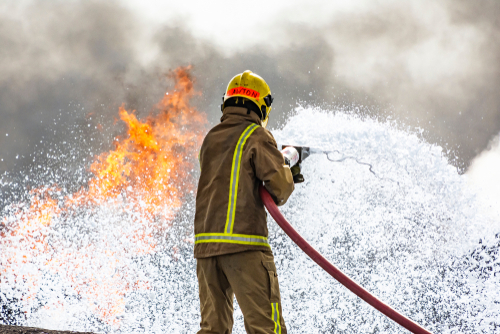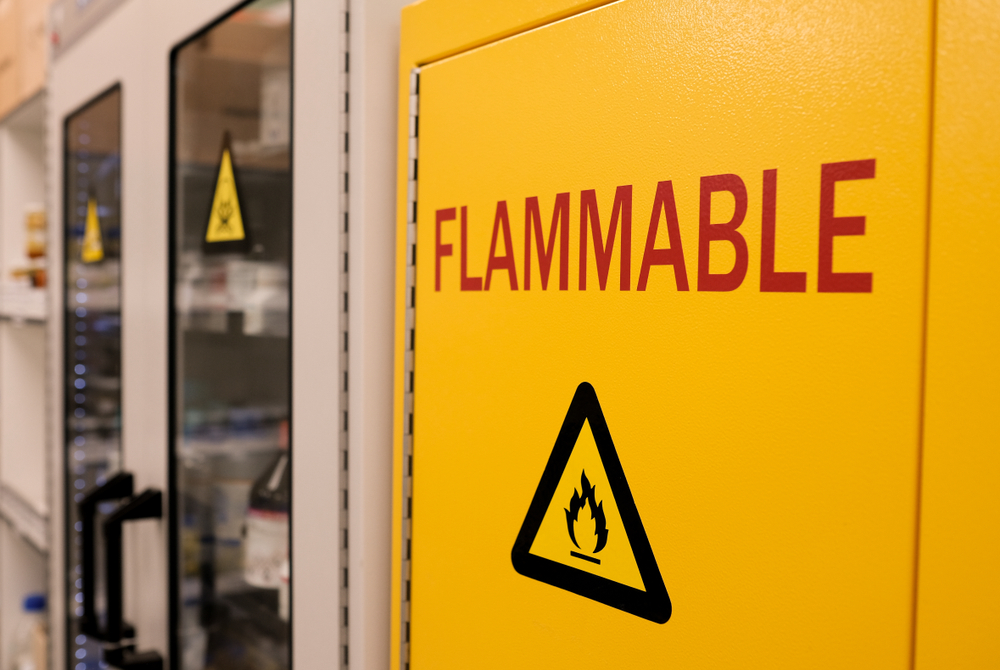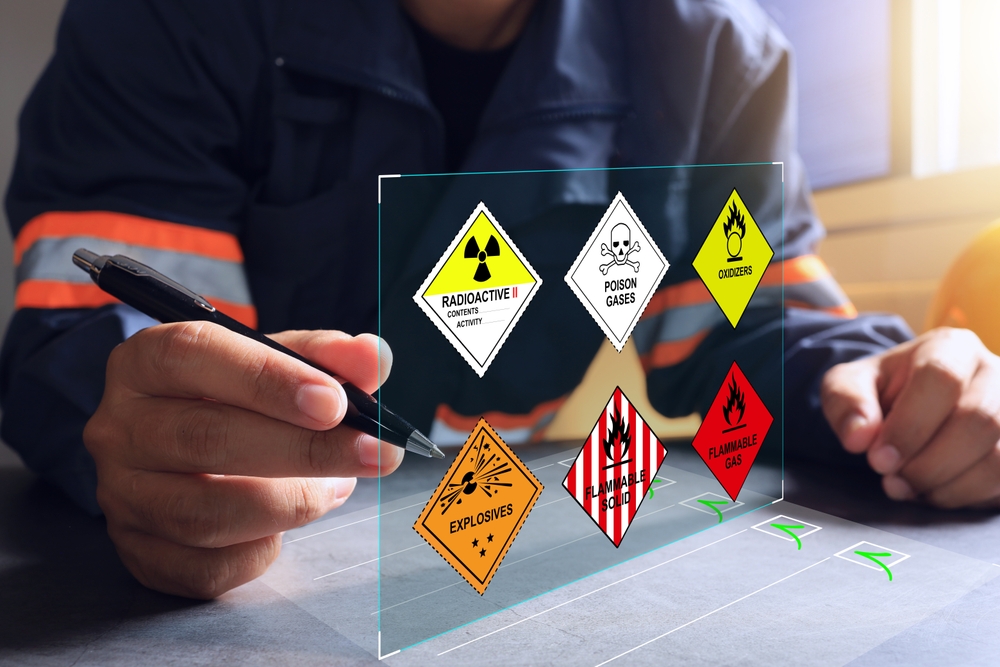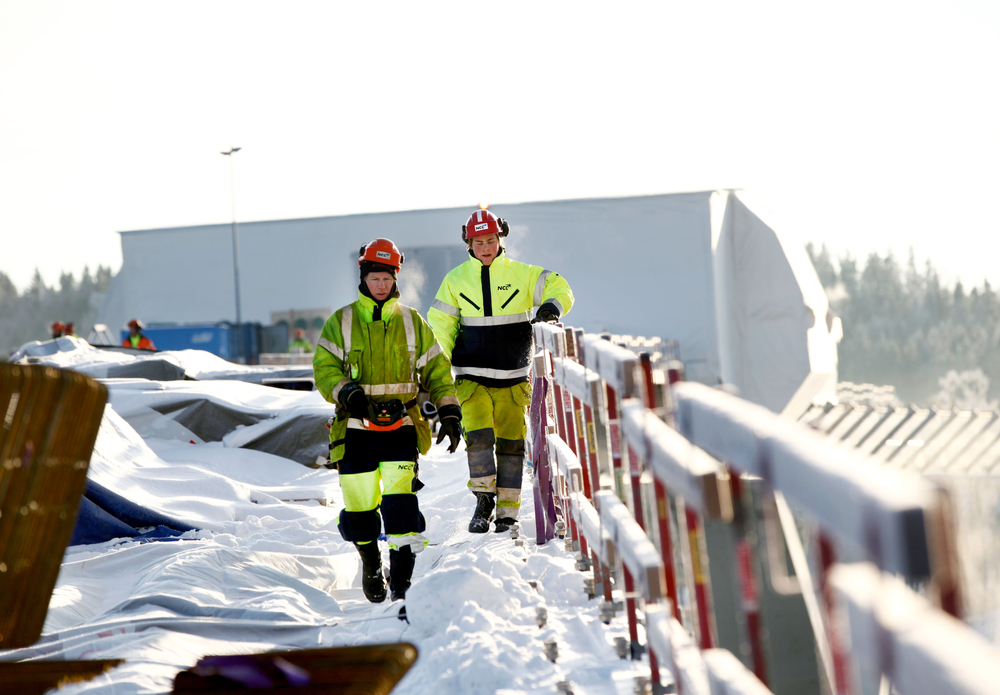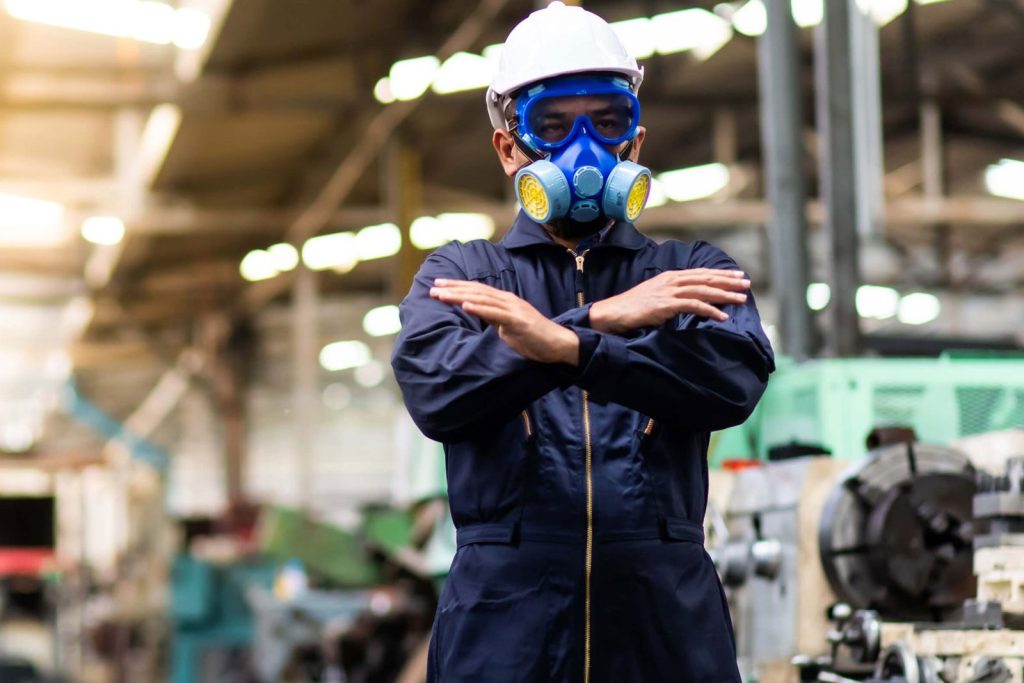A recent study into occupational cancer has reported that firefighters are three times more likely to die from cancer than the general population. This could be down to exposure to toxic chemicals whilst battling blazes, the study found.
Higher than average rates of prostate cancer, leukaemia and esophageal cancer have been reported amongst firefighters. The Fire Brigades Union have called for ‘better monitoring’ In addition to this they have been campaigning for better compensation for firefighters and their families.
Exposure to harmful substances linked to occupational cancer
There are various ways in which we can help reduce exposure to harmful substances. Some methods depend on:
- Industry
- Company size
- The substance
Regardless of any of these factors though, reducing rates of occupational cancer comes down to one thing; controlling the risk.
Occupational Cancers like lung cancer can be common amongst industries like construction and manufacturing. This is due to the exposure of toxic substances in the air like gas, fumes and dust particles. High on the agenda for The British Occupational Hygiene Society (BOHS) is Occupational Lung Disease. The BOHS campaign to raise awareness of this regularly. Raising awareness of the controls and measures that businesses must adhere to reduce exposure to harmful substances. Additionally this is to highlight what can go wrong when controls are missing.
Managing exposure and introducing steps and measures to control risk is important to safeguard employee health long term.
How toxic is fire?
The study found that a ‘cocktail of carcinogens’ were released during a fire. Which is almost certainly to blame for the occupational cancer cases we are seeing in the Fire Brigade. Toxic fumes can be released in most fires. When inhaled they can cause long-term health conditions like occupational cancer and death. The chemicals include:
- Benzene
- Polycyclic aromatic hydrocarbons
- Toluene
Furthermore it’s widely known that exposure to these chemicals on a long term basis can greatly affect human health. So that’s why its so important to ensure all businesses where exposure to harmful substances is prevalent, comply with a set of regulations.
Following the study, the Fire Brigades Union, which represents around 35,500 firefighters and other staff across the UK, say that the government should be ‘horrified; by the findings.
Regulating exposure to harmful substances
As with many industries, the HSE has advice and guidance to help the fire service balance and control risk. The purpose of the fire service is to protect the public. However, regardless of the purpose, the service has a legal responsibility to protect their workers for work related ill-health, injury and death. This includes occupational cancer.
Following new research, In 2021 the World Health Organisation (WHO) re-classified occupation exposure as a firefighter to ‘Carcinogenic to humans’. This is specifically in relation to the risk of cancer within the fire service. And in addition to the respiratory challenges that already exist within the fire service.
Moreover, a press release from the International Agency for Cancer stated that ‘Dermal exposure, inhalation, and ingestion are common routes of exposure’. Making fire-fighters high-risk for other types of health complaints. Sadly due to the nature of their work.
Speaking on the results, a Union Officer for the Fire Service stated that ‘“We know that there are clear ways we can make things better for firefighters. We need health surveillance. We need monitoring of exposures. We need legislation that will ensure that affected firefighters are given the compensation they deserve.”
Managing high-risk employees to reduce occupational cancer
Exposure monitoring can be useful in helping control the risk to employees. Usually, once a risk has been identified, steps need to be in place to minimise the risk. This can be achieved with legal measures and controls. However, planning for risk can be difficult for the fire service because they can’t always know what to expect when they visit a fire. Often having to go into dangerous situations and put themselves at risk in order to save lives. Various factors like location, presence of chemicals and pressurised situations can affect the ability to prioritise their own safety. And yet firefighters do this many times each year.
For this reason, monitoring and managing exposure to harmful substances within the fire service can be complex.
The Health and Safety at Work Act 1964 applies to all activities conducted by the Fire Service and their staff. However, the HSE refer to this as finding a balance between ‘the operational and health and safety duties of the Fire and Rescue service’. As an employer, the Fire Service has a legal responsibility to safeguard worker health. This means that where exposure monitoring and other ‘preventative’ measures can’t always apply, the move to health surveillance is required. This is especially important as the HSE has recognised that all risk cannot be eliminated for the fire service.
Reducing the risk of occupational cancer
As with all compliance regulations, it isn’t a ‘one size fits all’ approach. That’s why we work on bespoke packages with our customers on a need by need basis.
Firstly, identifying which employees are high-risk is paramount in reducing the chance of health problems escalating. Knowing which workers are more at risk, helps to plan extra steps to ensure protection of health before it becomes a life threatening occupational cancer.
Making contact with us is the first step in getting started with exposure monitoring, COSHH, DSEAR or health surveillance for your workforce. Our experienced technicians can help guide you through every step of the process and advise on which regulations you may need help with.
How to get in touch
Call us on 0845 004 2133, email enquiries@safetyfirstgroup.co.uk or via our contact us page here.

